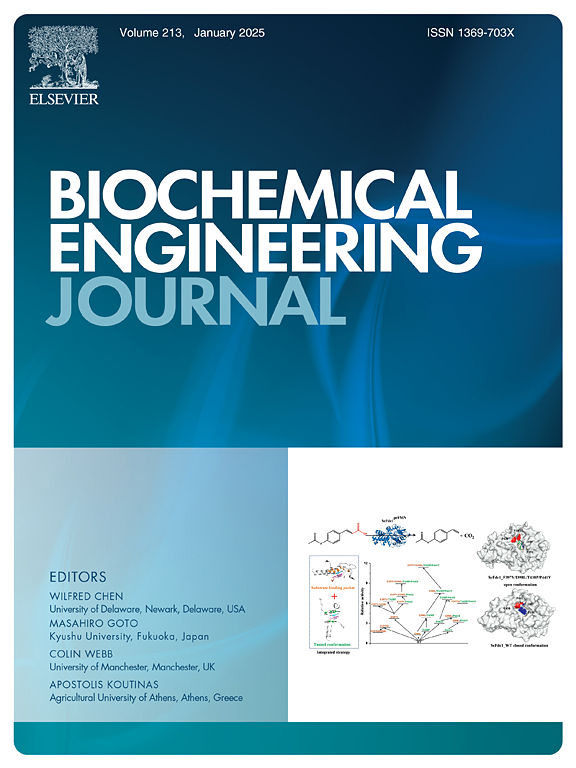Nonenzymatic glucose sensing using ultrafine copper halide catalyst integrated with electrochemical and microcontroller devices
IF 3.7
3区 生物学
Q2 BIOTECHNOLOGY & APPLIED MICROBIOLOGY
引用次数: 0
Abstract
Glucose detection is important in the field of clinical medicine, particularly when it comes to diagnosing and managing diabetes. Recently there has been a surge of interest in developing non-enzymatic glucose sensors. The advancements in non-enzymatic glucose sensors have shown significant progress, making them a focal point of research and development in diagnostics. This study presents the synthesis, characterization and application of polyaniline-stabilized copper iodide nanoparticles for glucose sensing. The copper iodide nanoparticles were synthesized through a modified in-situ polymerization and composite formation route. X-ray diffraction analysis verified the formation of cubic copper iodide (γ-CuI), while transmission electron microscopy demonstrated that particles were distributed within the polymeric matrix, ranging within the size from 4 to 12 nm. X-ray photoelectron spectroscopy and Raman spectroscopy further validated the formation of copper (I) iodide and polyaniline. The catalyst-modified electrode was evaluated in a three-electrode setup and demonstrated enhanced electrocatalytic activity for glucose oxidation under alkaline media. A microcontroller-based glucose sensor, integrating an Arduino Uno R4 Wi-Fi module, was developed for real-time monitoring, with data transmission to the ThingSpeak cloud platform. The system exhibited a stable and reproducible response, highlighting the potential of synthesized material as a cost-effective and efficient material for non-enzymatic glucose sensing.
利用超细卤化铜催化剂集成电化学和微控制器器件的非酶促葡萄糖传感
葡萄糖检测在临床医学领域非常重要,特别是在诊断和治疗糖尿病方面。最近,人们对开发非酶葡萄糖传感器的兴趣激增。非酶葡萄糖传感器的发展取得了重大进展,使其成为诊断研究和发展的焦点。本文研究了聚苯胺稳定的用于葡萄糖传感的碘化铜纳米颗粒的合成、表征和应用。采用原位聚合和复合合成的方法合成了纳米碘化铜。x射线衍射分析证实了立方碘化铜(γ-CuI)的形成,透射电镜显示颗粒分布在聚合物基体内,尺寸在4 ~ 12 nm之间。x射线光电子能谱和拉曼能谱进一步证实了碘化铜和聚苯胺的形成。在三电极设置中对催化剂修饰的电极进行了评估,并证明了在碱性介质下葡萄糖氧化的电催化活性增强。基于微控制器的葡萄糖传感器集成了Arduino Uno R4 Wi-Fi模块,用于实时监测,并将数据传输到ThingSpeak云平台。该系统表现出稳定和可重复性的响应,突出了合成材料作为一种经济高效的非酶葡萄糖传感材料的潜力。
本文章由计算机程序翻译,如有差异,请以英文原文为准。
求助全文
约1分钟内获得全文
求助全文
来源期刊

Biochemical Engineering Journal
工程技术-工程:化工
CiteScore
7.10
自引率
5.10%
发文量
380
审稿时长
34 days
期刊介绍:
The Biochemical Engineering Journal aims to promote progress in the crucial chemical engineering aspects of the development of biological processes associated with everything from raw materials preparation to product recovery relevant to industries as diverse as medical/healthcare, industrial biotechnology, and environmental biotechnology.
The Journal welcomes full length original research papers, short communications, and review papers* in the following research fields:
Biocatalysis (enzyme or microbial) and biotransformations, including immobilized biocatalyst preparation and kinetics
Biosensors and Biodevices including biofabrication and novel fuel cell development
Bioseparations including scale-up and protein refolding/renaturation
Environmental Bioengineering including bioconversion, bioremediation, and microbial fuel cells
Bioreactor Systems including characterization, optimization and scale-up
Bioresources and Biorefinery Engineering including biomass conversion, biofuels, bioenergy, and optimization
Industrial Biotechnology including specialty chemicals, platform chemicals and neutraceuticals
Biomaterials and Tissue Engineering including bioartificial organs, cell encapsulation, and controlled release
Cell Culture Engineering (plant, animal or insect cells) including viral vectors, monoclonal antibodies, recombinant proteins, vaccines, and secondary metabolites
Cell Therapies and Stem Cells including pluripotent, mesenchymal and hematopoietic stem cells; immunotherapies; tissue-specific differentiation; and cryopreservation
Metabolic Engineering, Systems and Synthetic Biology including OMICS, bioinformatics, in silico biology, and metabolic flux analysis
Protein Engineering including enzyme engineering and directed evolution.
 求助内容:
求助内容: 应助结果提醒方式:
应助结果提醒方式:


